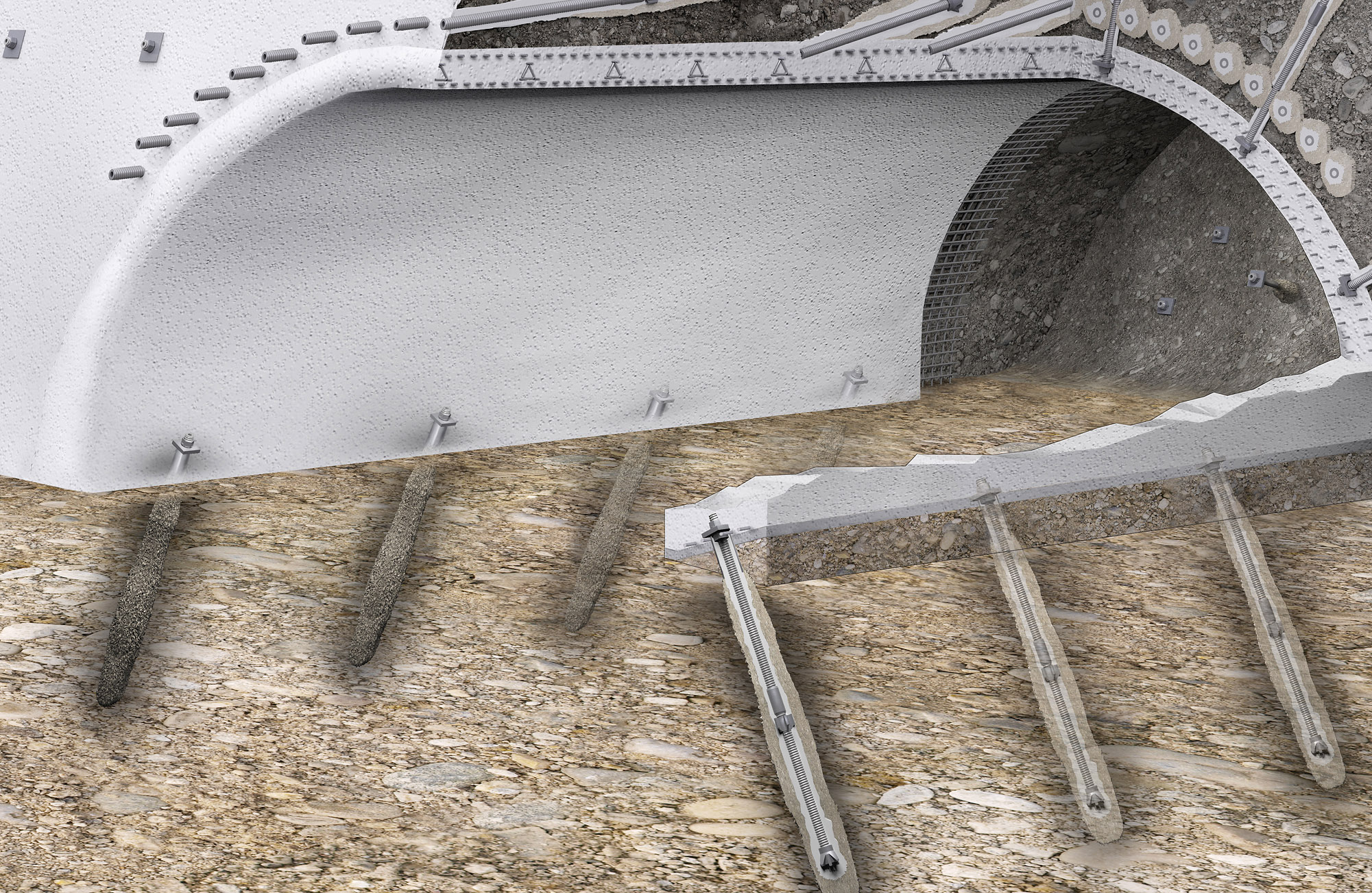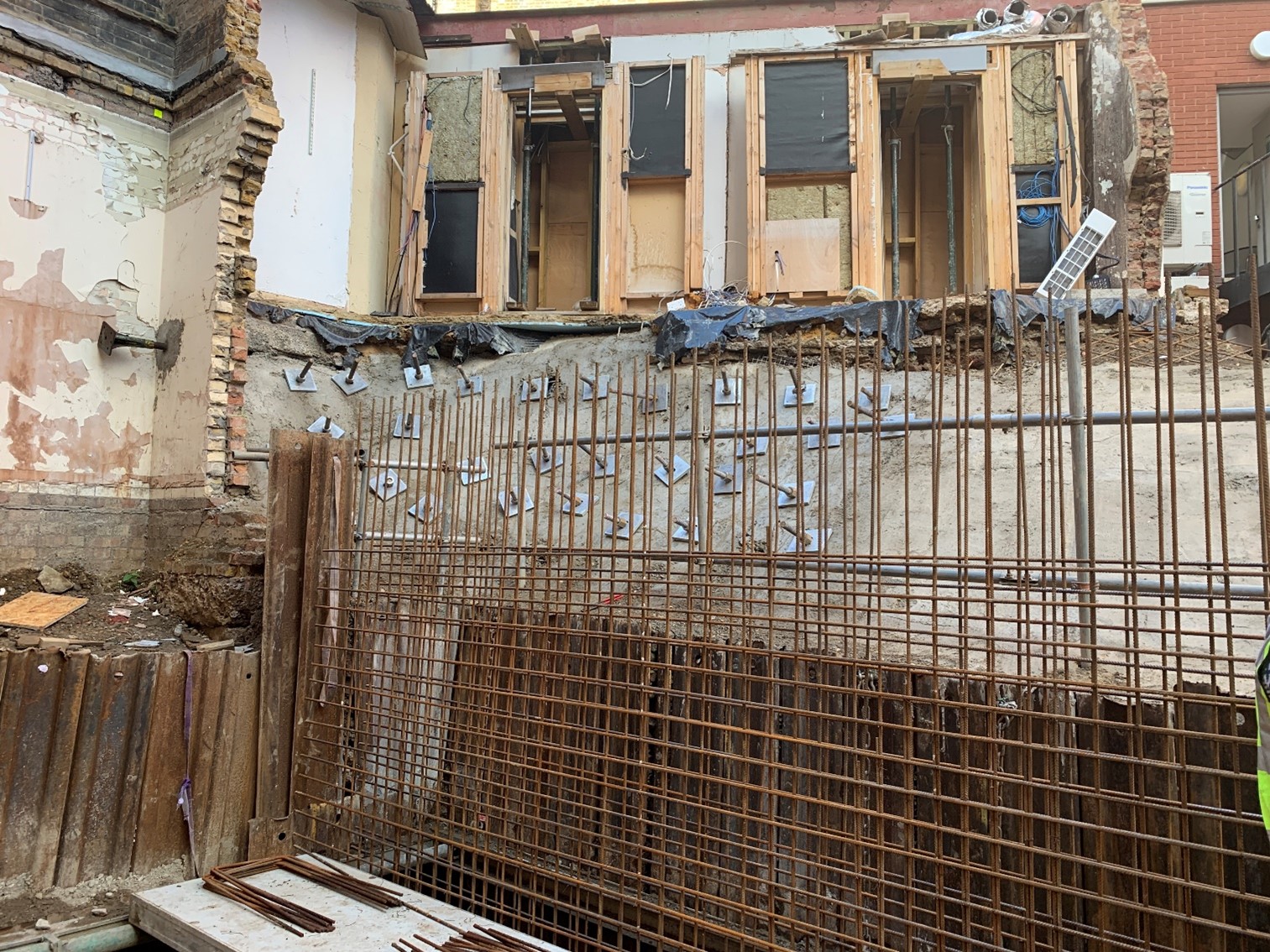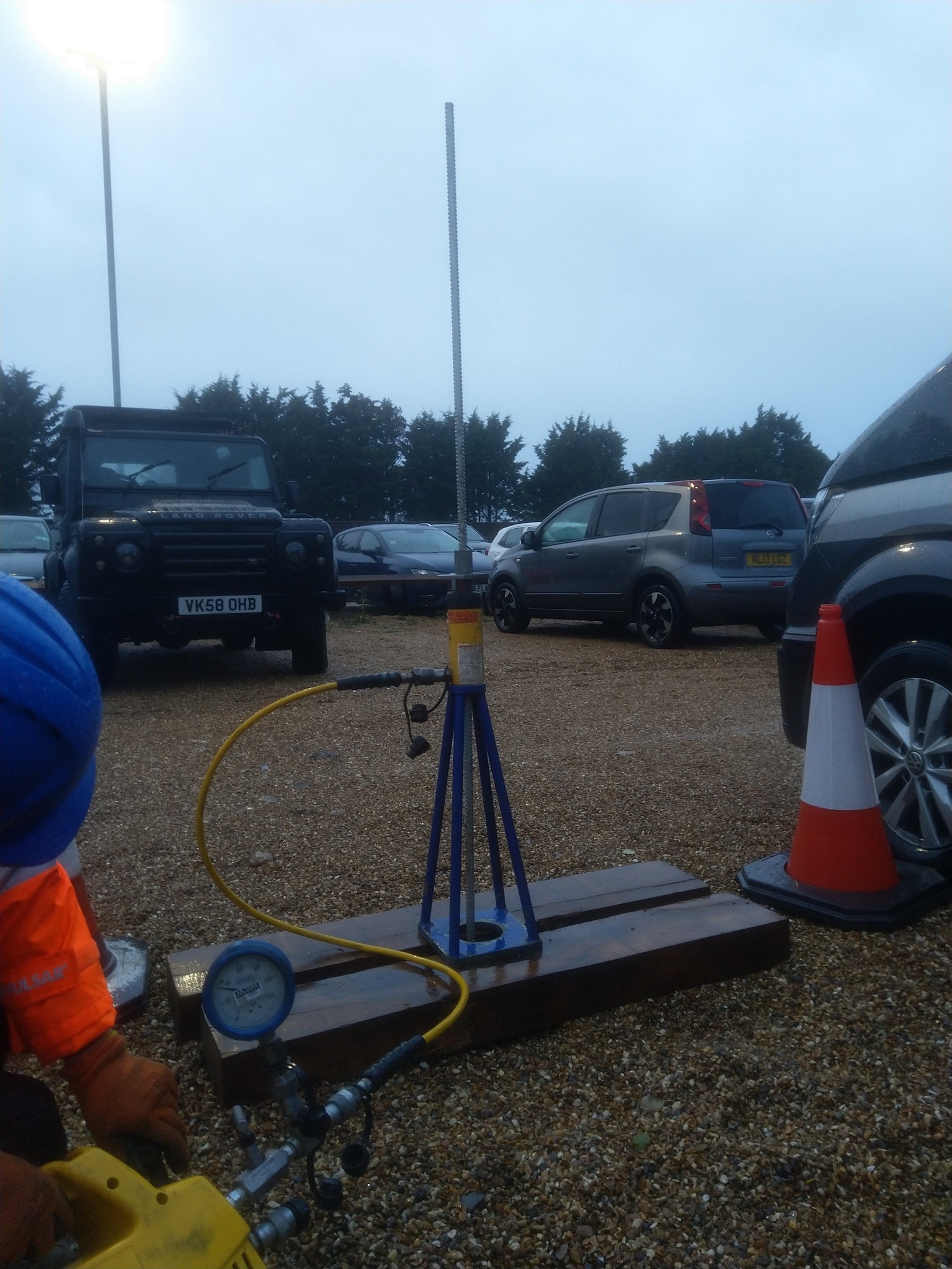Beta Design Consultants support their clients in providing geotechnical engineering services as well as structural engineering services related to the design of retaining walls, embankments, slope stability, deep excavations and temporary works design.
Beta Design Consultants design and specify ground anchors and soil nails to provide stability and reinforcement to soil and rock masses. While they serve similar purposes, there are some differences in their installation methods and applications.
Ground Anchors:
Ground anchors are structural elements that transfer tensile forces from a structure to the ground to provide stability. They consist of a high-strength tendon or cable that is anchored into the ground and a anchorage device at the free end. The anchorage device can be a steel plate, a wedge, or a grout body that develops frictional or passive resistance within the soil or rock mass.
Types of Ground Anchors:
- Temporary Ground Anchors: These anchors are used during construction to provide temporary stability to structures or excavations. They are typically installed using removable anchors and can be easily removed once their temporary function is complete.
- Permanent Ground Anchors: These anchors are designed to provide long-term stability to structures or slopes. They are typically installed using corrosion-resistant tendons and permanent anchorage devices. Permanent ground anchors are commonly used in applications such as retaining walls, bridge abutments, and slope stabilization.

(Copyright Platipus)

Soil Nails:
Soil nails are passive reinforcement elements installed within the ground to improve its stability. Unlike ground anchors, soil nails do not carry significant tensile forces but rely on their passive resistance to provide stability. Soil nails consist of a reinforcing bar or strand that is inserted into a pre-drilled hole and grouted into place.
Types of Soil Nails:
- Passive Soil Nails: These soil nails rely on their passive resistance against the surrounding soil or rock to provide stability. The grout body surrounding the reinforcing bar provides frictional resistance, enhancing the shear strength of the soil mass.
- Active Soil Nails: Active soil nails incorporate a stressing system that applies a preload to the reinforcing bar. The preload helps to induce an arching effect within the soil mass, increasing its stability. Active soil nails are used in situations where higher levels of reinforcement are required.
- Self-Drilling Soil Nails: Self-drilling soil nails, also known as hollow-bar soil nails, have a hollow core that allows for simultaneous drilling and grouting. They are often used in cohesive soils or weak rock formations where the drilling process requires additional support.

Both ground anchors and soil nails provide effective solutions for stabilizing slopes, retaining walls, and other geotechnical structures. The choice between ground anchors and soil nails depends on the specific project requirements, soil conditions, design considerations, and the expertise of the geotechnical engineer responsible for the design.
Our Geotechnical Engineers would review design considerations for ground anchors and soil nails to ensure their stability and effectiveness. Here are some key considerations:
- Soil Properties: The properties of the soil in which the ground anchors will be installed play a crucial role. Soil type, strength, stiffness, and permeability all influence anchor design. Our consulting engineers would advise on, brief and coordinate the detailed geotechnical investigations and soil testing.
- Anchor Layout: The layout and arrangement of ground anchors depend on the specific project requirements and the load to be resisted. Factors such as the magnitude and direction of the applied forces, the anchor spacing, and the required factor of safety all need to be considered during the design process.
- Anchor Capacity: The capacity of the ground anchors to resist applied loads is a critical consideration. The anchor capacity is typically determined through laboratory testing followed up by field testing and corelated to empirical methods based on soil parameters. The design should ensure that the anchor capacity exceeds the applied loads with an appropriate factor of safety. Proof load testing is typical and recommended. Beta Design Consultants would carry out the design, compare it with declared capacities provided by suppliers and installers and propose testing and witness such testing to ensure the installed anchors meet the design requirements.
- Load Transfer Mechanism: Ground anchors rely on the transfer of forces from the structure to the soil. The load transfer mechanism needs to be carefully analysed to ensure that the anchor forces are distributed evenly and that excessive localized stresses or deformations do not occur. Factors such as anchor head configuration, grout properties, and the presence of any load transfer devices should be considered.
- Durability and Corrosion Protection: Ground anchors are often exposed to harsh environmental conditions that may cause corrosion. The design should include appropriate corrosion protection measures, such as the use of corrosion-resistant materials for anchor components, protective coatings, or cathodic protection systems.
- Installation Considerations: Proper installation is crucial for the performance of ground anchors. The design should take into account the installation method, equipment requirements, and any site-specific constraints or challenges. The installation process should be carefully monitored to ensure that anchors are placed at the correct depth and inclination and that the grouting is carried out effectively.
- Monitoring and Inspection: Regular monitoring and inspection of ground anchors are important to detect any signs of distress or movement. Instrumentation, such as strain gauges or inclinometers, can be installed to monitor anchor performance over time. The design should incorporate provisions for access and monitoring equipment installation.
- Design Verification: Finally, it is essential to verify the design through appropriate analysis methods, including numerical modelling and stability analyses. These analyses should consider factors such as static and dynamic loads, soil-structure interaction effects, and long-term behaviour.
The design considerations for ground anchors and soil nails vary depending on the specific project requirements, local regulations. Beta Design Consultants geotechnical engineers would provide a thorough analysis and design of ground anchors or soil nails for various applications.
